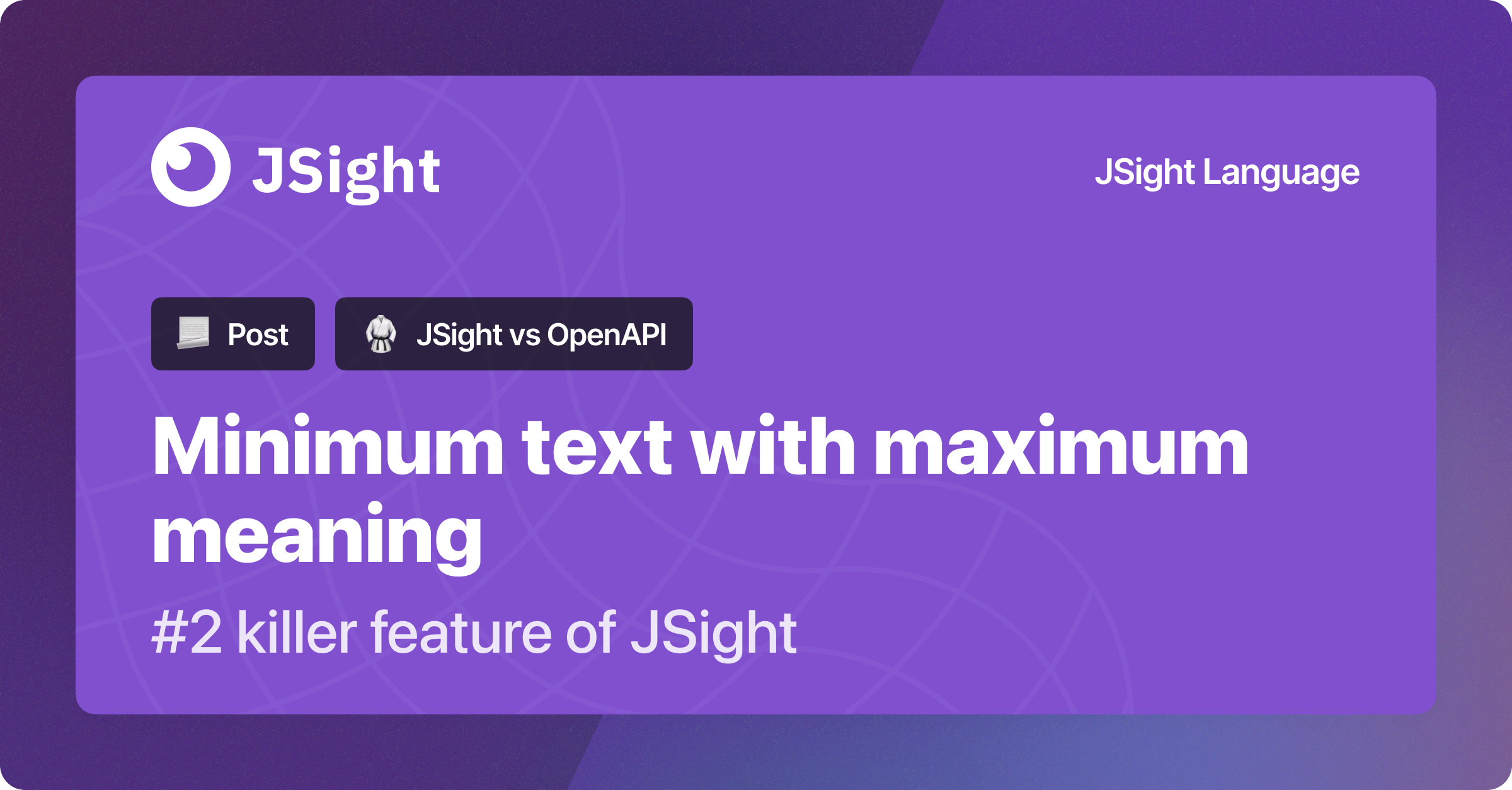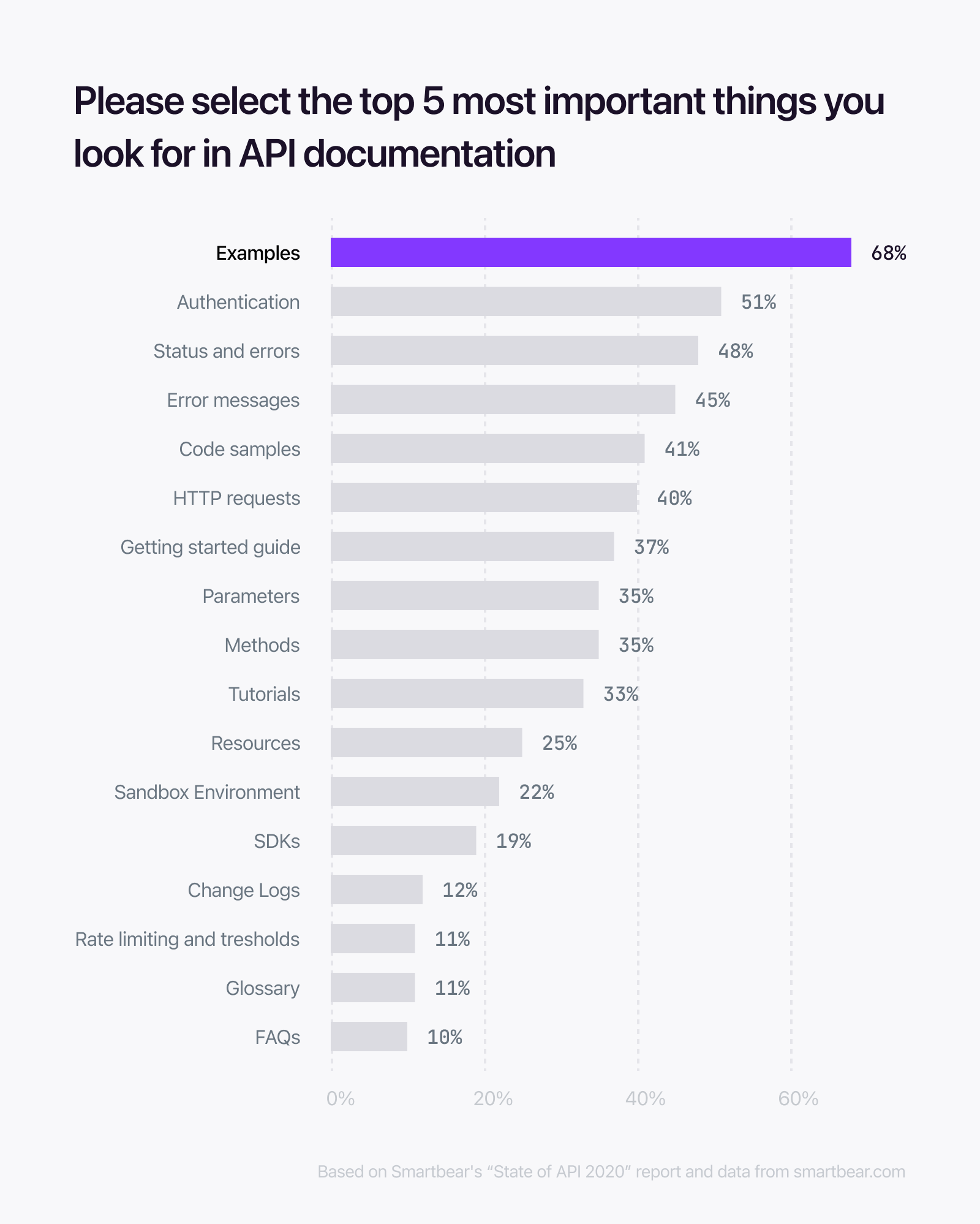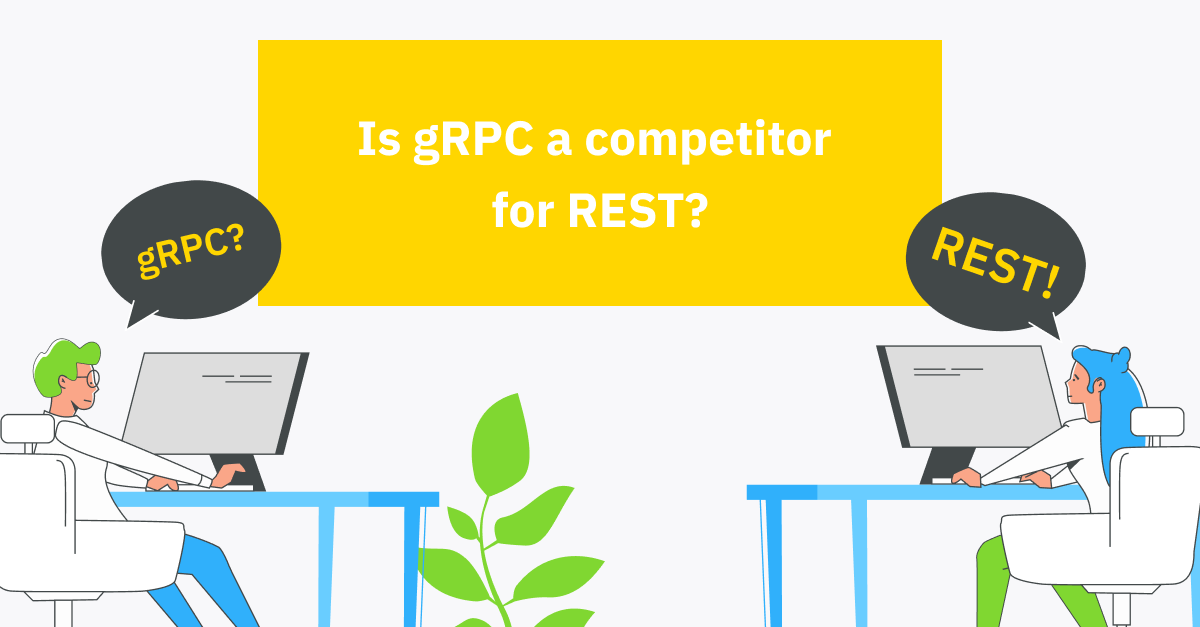
Programmers are already lazy enough. Typing extra text is not their thing. Less code with more benefits!
Programmers are aesthetes. The code must be lovely. Beautiful code is inexplicable and must be experienced.
We are programmers. And have done everything we could to make the JSight language concise and beautiful. And finally, it looks like we’ve got it!
For example, see what a simple API on JSight looks like:
JSIGHT 0.3
GET /cats/{id}
200
{
"id" : 123, // {min: 0}
"name" : "Tom"
}
Any programmer, without requiring any explanation, will immediately and unmistakably understand what this API is about. Nothing superfluous! Every word, every letter has an important and precise sense.
Compare the same API on OpenAPI (Swagger):
openapi: 3.0.3
info:
title: ""
version: ""
paths:
/cats/{id}:
get:
parameters:
- name: id
in: path
required: true
schema: {}
responses:
200:
description: ""
content:
application/json:
schema:
type: object
required: [id, name]
properties:
id:
type: integer
minimum: 0
example: 123
name:
type: string
example: "Tom"
Doesn't this code seem redundant, to put it mildly?
We’re not criticizing OpenAPI. We’ve previously used it a lot and truly love it. But the world is moving forward and outdated technologies have to give way to new ones. It's time to move on to JSight, which is both concise and beautiful.
You can try out the JSight language right now: editor.jsight.io!
Learn more about JSight in a quick tutorial and in the official specification.


